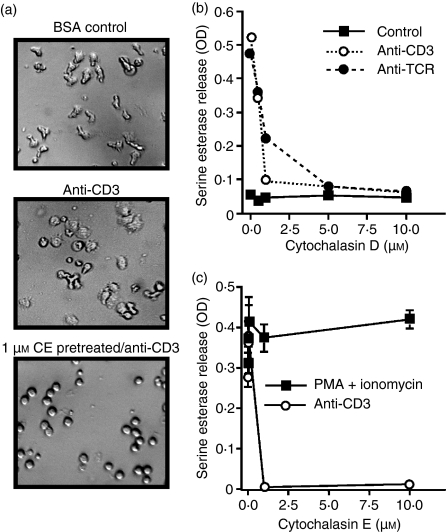Figure 1.
Cytochalasins inhibit signalling for degranulation, but not the exocytosis of lytic granules. (a) Cl 11 clone cells were left untreated and added to either control bovine serum albumin (BSA)-blocked wells (upper panel) or wells pre-coated with anti-CD3 (145-2C11) (middle panel). One group of cells was pretreated for 15 min with 1 µm cytochalasin E (CE) and then added to plate-bound anti-CD3 (lower panel). All photographs were taken 25 min after addition of cells to the wells. (b) Cl 11 cells were stimulated with immobilized anti-CD3 (2C11) or anti-T-cell receptor (TCR) (H57-597) in the presence of the indicated concentration of cytochalasin D. Serine esterase activity was measured in the supernatant at about 4 hr. (c) AB.1 clone cells were stimulated with plate-bound 145-2C11 (anti-CD3) or with 150 ng/ml phorbol 12-myristate 13-acetate (PMA) and 2 µm ionomycin in the presence of the indicated concentration of cytochalasin E for 4 hr before supernatants were assayed for serine esterase activity. The results are representative of results with both cytochalasin D and E on both clones AB.1 and Cl 11. The experiments were performed in triplicate and error bars indicate standard deviations. Note that for most samples the error bars are smaller than the symbols. OD, optical density.

